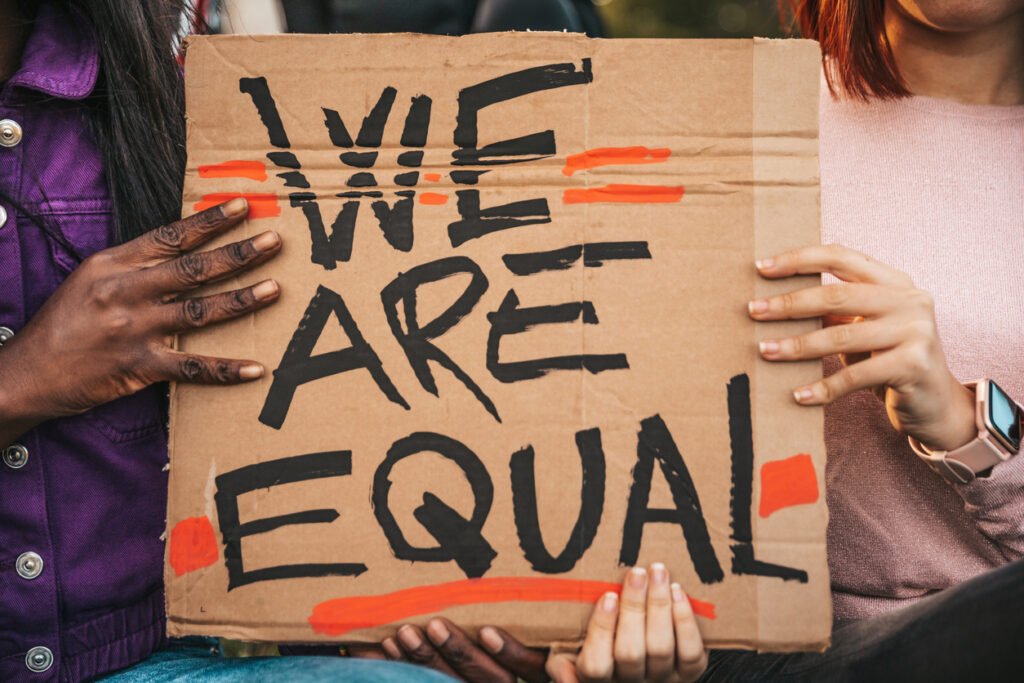The recent news that the disability pay gap widened to nearly 15% throughout 2021 serves as yet another example of the way in which disabled workers are consistently overlooked and underserved.
The Office for National Statistics (ONS) has revealed that disabled employees are earning, on average, almost £2 per hour less than their non-disabled colleagues. The report details that disabled employees with a mental impairment had the largest pay gap at 18.6%, whilst those with a physical impairment had a pay gap of 9.7%.
Broader trend of disability discrimination
With the UK’s disabled population currently estimated at 14.1 million people, this demographic is by no means a silent minority. Despite this, the ONS’ findings add to the growing list of discriminations that the disabled community routinely face: from disproportionate redundancy rates to higher levels of long-term unemployment, the pandemic has brutally exposed the persistent belief that disabled lives are less valuable.
Mandatory reporting would only capture a snippet of the full picture as only large organisations would be required to report
However, mandatory disability workforce reporting is not the key to closing the employment gap, creating more inclusive workplaces or cultivating an environment of trust. Forcing employees to identify as ‘disabled’ is very different from requesting if employees have a disability. Language is important and businesses cannot afford to overlook self-identity.
Enforcing mandatory reporting
Enforcing mandatory reporting does not guarantee that the disability employment gap will lessen, that there will be an uplift in employer transparency or that the experience of disabled employees will significantly improve.
Mandatory reporting would only capture a snippet of the full picture as only large organisations would be required to report. Moreover, it would only measure the number of disabled people who are currently employed rather than the number who may have lost employment or be looking for work.
There is a lack of consensus worldwide regarding the definition of disability and what category certain conditions fall under. The negative connotations of ‘must’ and ‘mandatory’ do not leave much room for employers and employees alike to ‘opt in’ and detracts from the benefits of having a diverse workforce.
Inequity in other areas
When addressing other areas of inequity – mandatory reporting has not worked. Gender and racial inequalities within the workplace remain rife despite the introduction of pay gap reporting. Unfortunately, enforcement bodies simply do not have the resources to enforce reporting and consequently many employers do not report.
Last year, the ONS reported that a higher proportion of disabled employees were made redundant than their non-disabled counterparts. Between July to November 2020, 21.1 per thousand disabled employees were made redundant, compared to 13.0 per thousand employees who are not disabled.
Their latest figures show that the disability pay gap has consistently been wider for disabled men than for disabled women; in 2021 median pay for disabled men was 12.4% less than non-disabled men, and median pay for disabled women was 10.5% less than non-disabled women.
Simply reporting the proportion of disabled employees within the workplace will not provide any insight into the relative spread of those employees
Lack of representation
This wage inequality is symptomatic of a wider issue of representation within businesses. Last month, the Guardian reported that in Australia there are loopholes in which people with disabilities are working for wages as low as $2.27 an hour. These demeaning wages are calculated using a tool that purports to measure ‘productivity’ of employees.
The disability royal commission is currently investigating this, but this is not an anomaly across the globe. Conversely, it can be argued that we are ‘heading’ in the right direction as conversations regarding disability inclusion are being had and tangible actions are being taken within the diversity and inclusion space. The Valuable 500’s commitment statements are a testament to that.
Examining the reliability of the data
A baseline needs to be established to monitor progression. If there is not a thorough regulatory body in place to examine the data – just how reliable are the findings? To build an accurate depiction of the disability pay gap companies need to know the number of disabled employees they have.
With droves of people choosing not to self-identify/ disclose their disability – these findings need to be further examined. Moreover, simply reporting the proportion of disabled employees within the workplace will not provide any insight into the relative spread of those employees.
It is possible that a company with 10% of disabled employees may not be more inclusive than that of one with 7% disabled employees if all of those employees are in entry-level roles with little opportunity for progression.
These findings may not be a measure of workplace inclusion due to some disabled staff members preferring to have lower-paid roles or reduced hours to maintain a healthy work-life balance. Inclusion is about choice, equitable investment of resources and leadership.
The ONS’ findings have highlighted that the disability employment gap has not moved in a meaningful way and action must be taken to address this. Driving an increased uptake of voluntary reporting and supporting the revision of the voluntary reporting framework, would enable employers to truly focus on the experience of their disabled employees.
Disabled people have proven, time and time again that they can and do add value. This is not merely a business case on the merits of capitalising on disabled talent – it is a human case
Building better faster
We need to get to the root of the problem to effectively build better and faster. Disabled people have proven, time and time again that they can and do add value. This is not merely a business case on the merits of capitalising on disabled talent – it is a human case.
Only by putting disabled staff and consumers at the heart of business strategies will companies rewrite the cultural narrative necessary to reverse the disability pay gap, embrace intersectionality and gauge the extent to which it is reflected within business.
Interested in this topic? Read How organisations must be more inclusive to the disabled community.
[cm_form form_id=’cm_65a14c3f5da64′]






